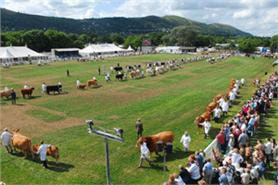Last week in the news much was made of a dedicated satellite launch for broadband Internet access (http://www.bbc.co.uk/news/science-environment-11846237). Satellite Internet access is nothing new and varying levels of service are available today but this launch, along with a couple of others that are planned, do bring additional bandwidth and some improved services. With this in mind I thought it would be useful to cover the good and bad of satellite Internet and whether it can help at your event. At a high level the pros and cons are as follows:
Pros
- Relatively quick to deploy at short notice
- No requirement for any physical wired infrastructure to the site
- Relatively high bandwidth (primarily download) can be purchased compared to low-end broadband
Cons
- Requires line of sight (roughly to southern horizon and an associated Fresnel zone area)
- Requires alignment (although automatic motorised systems are now available)
- Very high latency (delay) impacts usability for some applications
- Can suffer weather impacts such as rain fade
- Higher bandwidth tends to require a larger dish
- Tends to work out very costly for longer duration events
For an event organiser some of these points are very important, for example the high latency makes the use of most VPNs virtually impossible which is a real problem if for example you need to run a ticketing system connected via VPN. VoIP services also suffer with high latency meaning delays and ‘Darlek’ effects. There are some improvements with the latest generation services but the simple fact is that satellites are a long way away and will always suffer high latency. It is also important to not assume a satellite dish will have line of sight – there are many situations where getting visibility to the southern horizon is harder than expected and it is also import to factor in the Fresnel zone, this effect means that a small gap between two buildings or trees may not work as expected.
Not all satellite services are the same. Different satellites have different ‘footprints’ meaning they cover different parts of Europe. Many providers also use contention ratios on satellite services too in a similar way to wired ADSL/Broadband services. There are a range of speed options ranging from consumer type services up to more business/professional levels, some services are also optimised for digital video links rather than web browsing.
So, in summary, when should you use satellite? When there really are no other options. We can, and do use satellite from time to time but it is the last resort and requires careful planning to ensure the service delivered meets the requirements. We always work with customers to review all options and recommend the most appropriate solution.



